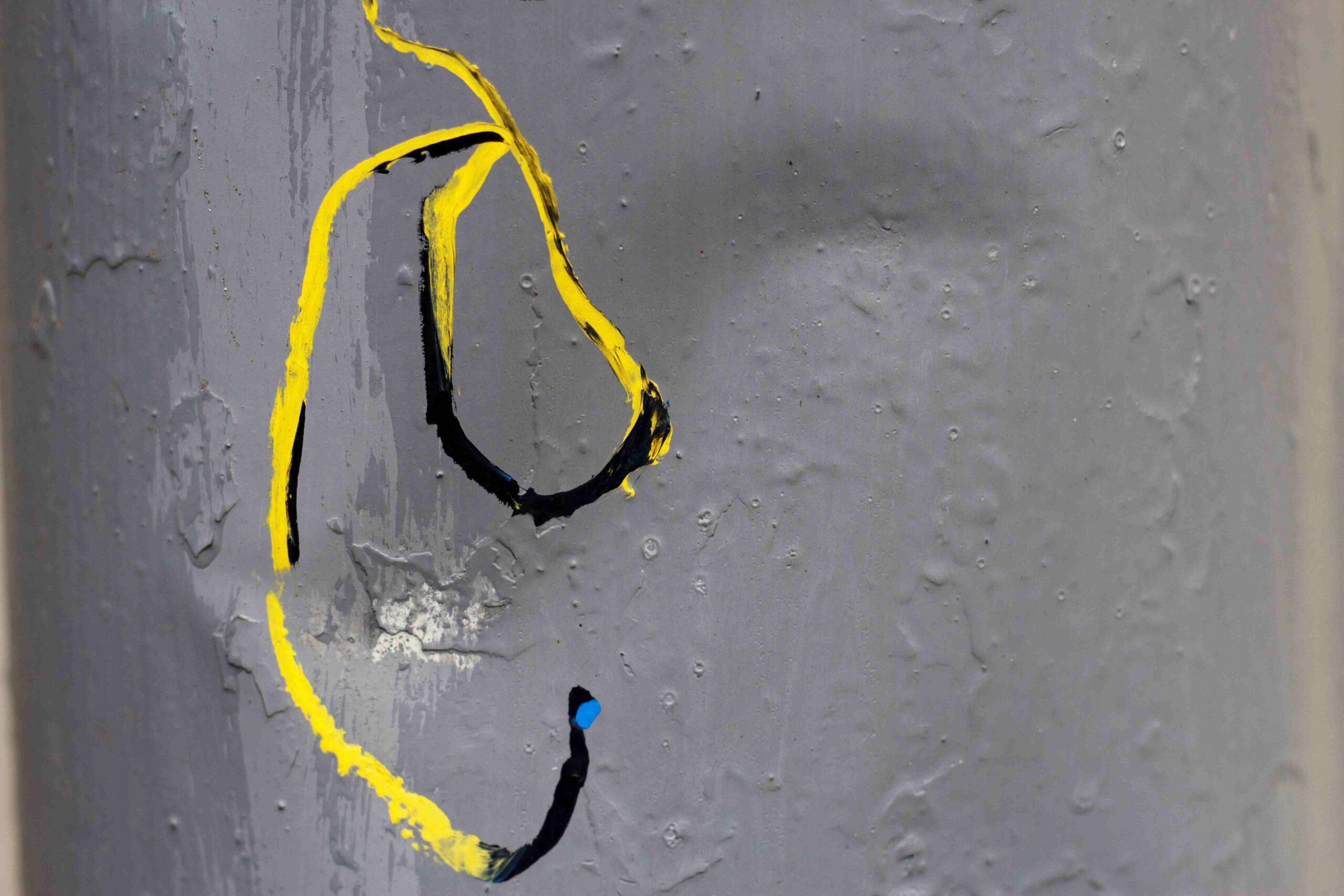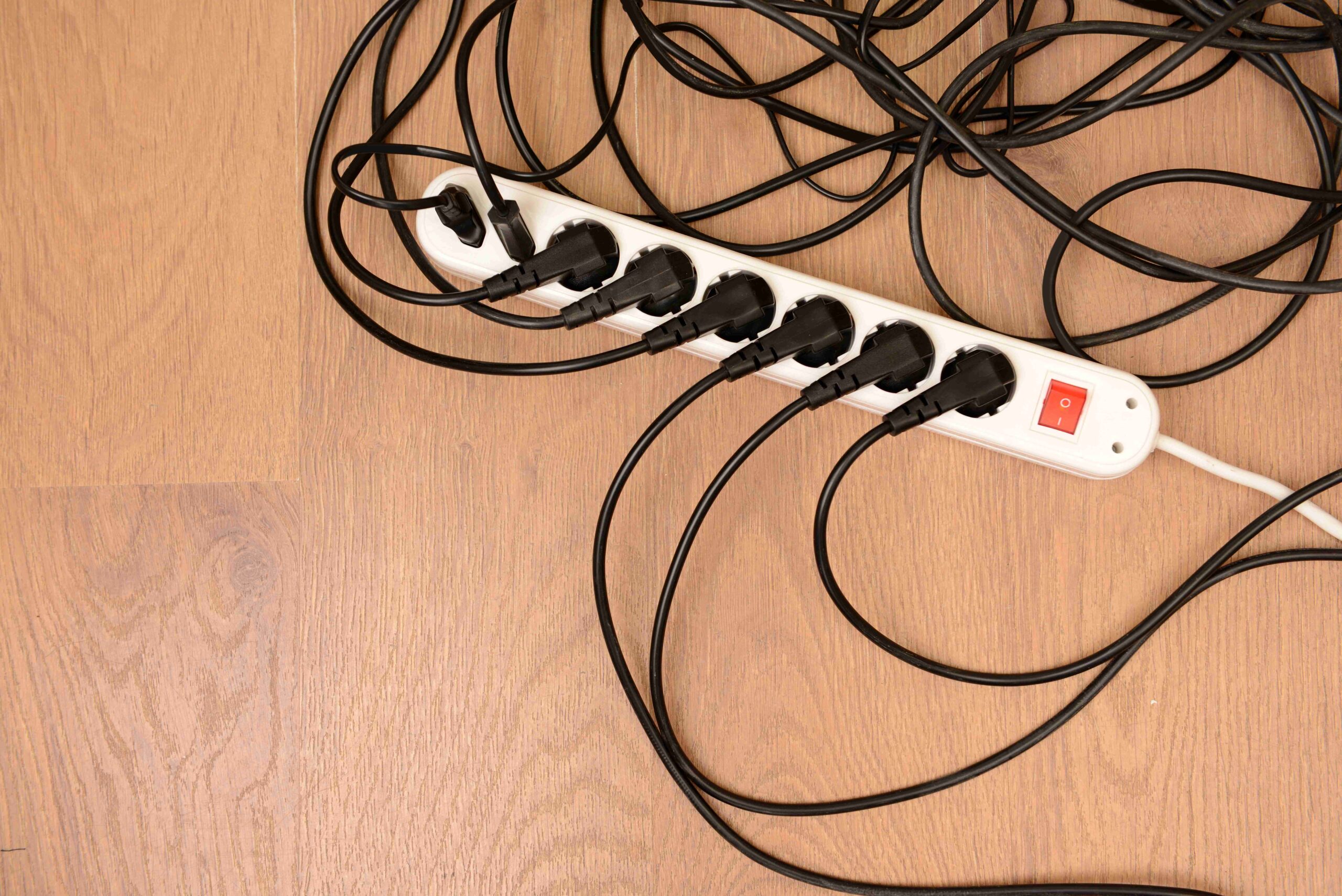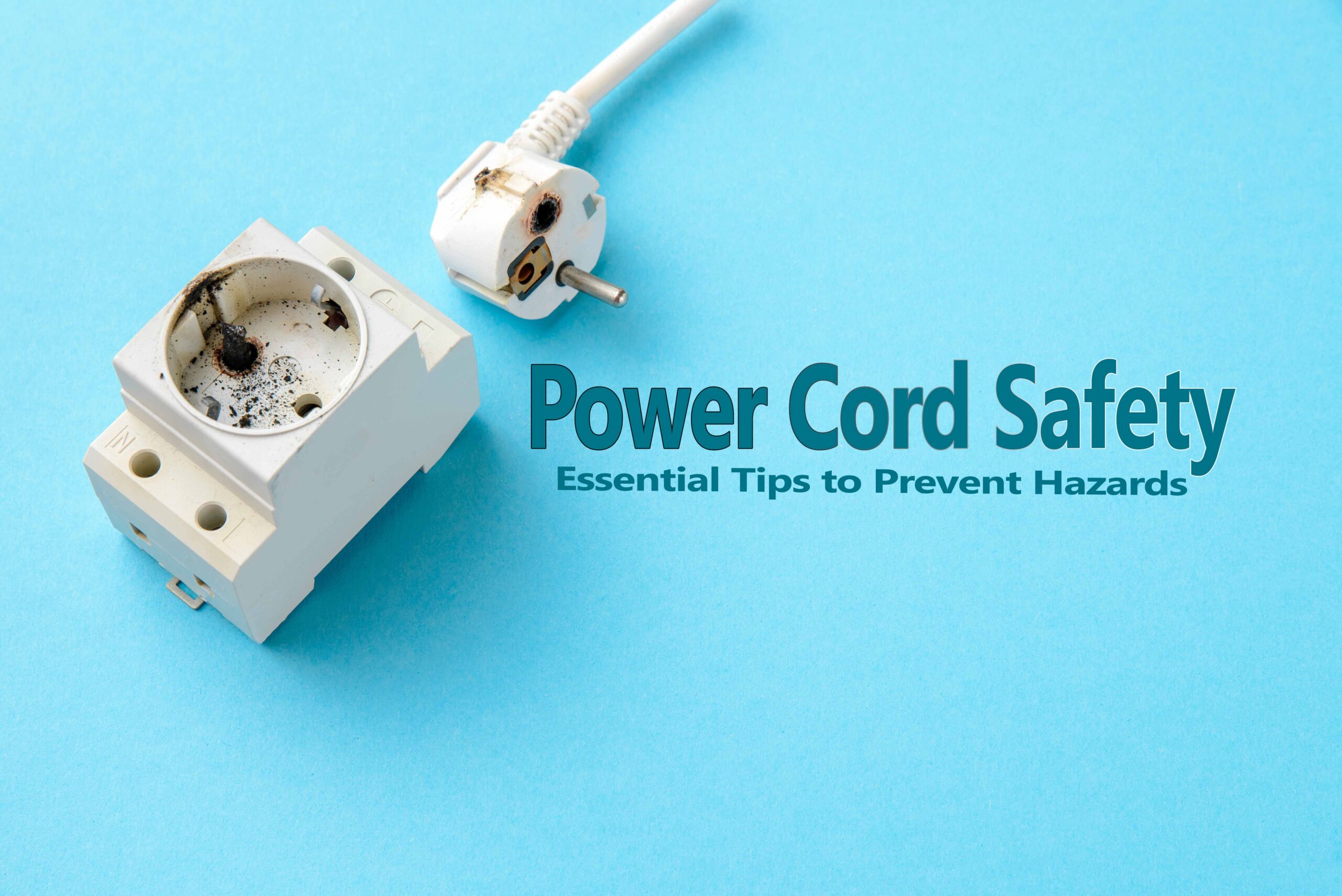Always handle power cords with care to prevent damage and hazards. Regularly inspect them for fraying or defects.
Ensuring the safety of power cords is an essential aspect of both workplace and home safety. Power cords, part of our everyday lives, provide electricity to a myriad of devices, from laptops to kitchen appliances. Their constant use makes them susceptible to wear and tear, which can lead to electrical shorts, shocks, or even fires.
To minimize these risks, it’s crucial to maintain power cords properly and use them as intended. Simple actions like avoiding overstretching cords, keeping them away from high-traffic areas where they might be tripped over, and unplugging them when not in use can significantly enhance safety. Implementing these best practices for cord safety can prevent accidents, extend the life of your electrical devices, and maintain a safe environment for everyone.
Why Power Cord Safety Matters
Keeping power cords safe is key to maintaining your home’s safety.
Preventing Electrical Accidents
Electrical accidents can be deadly. By managing cords properly, you keep everyone safe.
- Check cords for damage regularly.
- Use correctly rated extension cords.
- Never overload power strips.
Protecting Your Appliances And Devices
Proper cord care extends your devices’ lifespans.
- Avoid twisting or pinching cords.
- Unplug devices not in use.
- Shield cords from extreme temperatures.
Avoiding Property Damage
Safe power usage prevents fires and property damage.
| Do’s | Don’ts |
|---|---|
| Secure cords along walls | Run cords under rugs |
| Use surge protectors | Connect many devices to one outlet |

Credit: www.pinterest.com
Common Power Cord Hazards
Electricity is crucial in our homes and workplaces, yet it poses certain risks. Understanding these dangers is crucial for safety. We often overlook power cord hazards, which can lead to accidents or even fires. Let’s focus on three common risks and how to prevent them.
Overloading
Plugging too many devices into a single outlet can be dangerous. Overloading can cause overheating and potentially start a fire. Always check the power rating of your extension cords and surge protectors to ensure they can handle the connected devices.
- Check wattages: Add up the wattage of plugged-in devices.
- Avoid multiple power strips: Connect directly to the wall outlet if possible.
- Safety certified: Use cords with recognized safety certification.
Damage To Cords And Plugs
Visibly damaged cords and plugs can expose wires, leading to shock or fire hazards. Regularly inspect cords for cracks, frays, or kinks. Unplug any damaged items immediately and replace them or seek professional repair.
| Signs of Damage | Action Required |
|---|---|
| Exposed Wires | Disconnect and replace |
| Frayed Insulation | Stop use, replace cord |
| Loose Connections | Tighten or repair |
Improper Use Of Extension Cords
Extension cords provide convenience but can be misused. They aren’t a permanent wiring solution. Never daisy-chain multiple extension cords together. Ensure the extension cord is suitable for the device’s power needs and environment. Outdoor cords should have weatherproofing.
- Match amperage ratings of cord and device.
- Use cords rated for outdoor use outside.
- Do not cover extension cords with rugs or furniture.
Choosing The Right Power Cord
Your devices deserve the best. A perfect power cord ensures safety and efficiency. Learn how to pick the right one.
Matching Voltage Requirements
Always check the voltage rating before buying a power cord. It must match your device’s requirements.
- Check your device’s label or manual for voltage needs.
- Match with the power cord specifications.
Mismatched voltage can lead to device damage or hazards.
Selecting The Right Cord Length
Get the length just right. Too long can cause tripping. Too short may overstretch.
- Measure the distance between your device and the outlet.
- Choose a cord that gives some extra length for flexibility.
Choosing The Right Type Of Cord
Various cord types exist in different environments.
| Type | Use-case |
|---|---|
| Basic | Indoor, low-risk areas. |
| Heavy-duty | Outdoors, extreme conditions. |
Look for the right cord type to ensure safety and durability.
Proper Use And Maintenance Of Power Cords
Power cords are an essential part of any electrical device’s operation. Ensuring their proper use and maintenance is crucial for safety and longevity. Learn the best practices for handling power cords, from plugging them in to storing them correctly. Keep your devices powered and your home safe by following these tips.

How To Plug And Unplug Cords Safely
Plugging and unplugging power cords seems straightforward but requires careful attention. Follow these steps:
- Inspect the plug and outlet for any dirt or damage before use.
- Ensure your hands are dry to avoid electric shocks.
- Grasp the plug firmly and push it into the outlet securely.
- Never yank the cord to unplug. Always pull gently from the plug.
Checking Cords For Damage And Wear And Tear
Regular inspections prevent accidents caused by damaged cords. Look for these signs:
- Cracks or fraying in the cord’s insulation.
- Signs of burning or melting.
- Bent or rusty prongs on the plug.
- Loose connections or parts that wiggle.
Replace damaged cords immediately to ensure safety.
Storing Cords Properly
Correct storage extends the life of your power cords.
- Keep cords away from high-traffic areas to prevent tripping.
- Coil them loosely to avoid kinks that can break wires inside.
- Store cords in a dry place away from extreme temperatures.
- Do not hang cords over nails or hooks, which can cause damage.
With these simple tips, you can maintain your power cords in top condition, preventing hazards and ensuring your devices function properly.
Tips For Using Extension Cords Properly
Extension cords are a great help in daily life. But safety comes first. Follow these easy tips to keep your home safe.
Avoiding Overloading
Extension cords can catch fire if overloaded. It’s important to know the cord’s power limit. Never plug in more than what your cord can handle.
- Check the wattage rating on your cord.
- Calculate the total wattage of plugged-in devices.
- Keep the total under the cord’s limit.
Using Indoor Or Outdoor Cords Appropriately
Indoor cords and outdoor cords are not the same. Outdoor cords are tougher. They can handle weather changes. Indoor cords can’t.
| Indoor Cords | Outdoor Cords |
|---|---|
| Lighter, more flexible | Thicker, weather-resistant |
| For inside use only | Suitable for gardens and outdoor settings |
Avoiding Trip Hazards
Extension cords across the floor can trip someone. It’s easy to prevent.
- Run cords along walls, not across walkways.
- Use cord covers if needed.
- Keep cords out of high-traffic areas.
Tape cords down. This keeps them flat on the surface. It makes tripping less likely.
Dealing With Power Cord Emergencies
Power cords help bring our gadgets to life. But, they can be dangerous. Mishaps happen. Knowing what to do during a power cord emergency can save lives and homes. Let’s explore safe responses to common power cord crises.
What To Do In Case Of An Electrical Fire
Never use water on an electrical fire. It can make things worse. Here’s what to do:
- Turn off the power – If it’s safe, unplug the cord or switch off the breaker.
- Use a fire extinguisher – Class C extinguishers fight electrical fires. Know where it is beforehand.
- Call for help – Get out of the house and call 911. Give them details and wait safely away from the fire.
Responding To Electrical Shock
If someone gets an electrical shock:
- Cut the power – Unplug the cord or flip the breaker immediately.
- Do not touch – Never touch the victim with bare hands if they’re still in contact with electricity.
- Seek medical help – Call 911. If the person is unresponsive, start CPR if you’re trained.
How To Get Help
For electrical emergencies, time matters. Know these steps:
| Step | Action |
|---|---|
| 1 | Call 911 – Describe the emergency and your location. |
| 2 | Inform – Tell the operator if there’s a fire or someone’s injured. |
| 3 | Follow instructions – Do what the 911 operator says until help arrives. |
Remember, keep emergency numbers handy, and always prioritize safety over property.
Legal Requirements For Power Cord Safety
Keeping power cords safe requires following certain legal rules. These rules make sure that power cords do not cause harm. In workplaces, homes, and throughout cities, different agencies set standards to protect everyone. Let’s explore these important rules.
Osha Standards For Workplaces
The Occupational Safety and Health Administration (OSHA) sets strict guidelines for power cord safety in the workplace. OSHA ensures employees remain safe from electrical hazards. Here are the key standards:
- Use of covers: Protect cords in high-traffic areas.
- Regular inspections: Check for wear and tear.
- Repair or replace: Fix damaged cords immediately.
Consumer Product Safety Commission Guidelines For Home Use
At home, the Consumer Product Safety Commission (CPSC) offers guidelines to prevent fire and electrical accident risks. The CPSC recommends:
- Avoid overloading: Do not plug too many devices into one outlet.
- Proper storage: Unplug and store cords away neatly.
- Use surge protectors: Guard against sudden spikes in voltage.
City And State Building Codes
Local building codes often include power cord safety rules. These rules vary by city and state. Still, they share common goals:
| Code Focus | Common Requirements |
|---|---|
| Installation Standards | Professional installation of electrical systems. |
| Material Quality | Use of approved, durable materials. |
| Regular Updates | Upgrading systems to meet the latest safety standards. |
How To Teach Power Cord Safety To Children
Electricity powers our world, but it also requires respect and understanding, especially for young curious minds. Teaching power cord safety to children is crucial in preventing accidents and ensuring their safety. Engage your children with straightforward lessons and practical activities to instill a healthy respect for electricity.
Why Children Need To Understand Power Cord Safety
Knowing the dangers of electricity can save lives. Children interact with electronic devices daily, making it vital to teach them about the risks. Simple rules and clear instructions can help children understand how to handle power cords properly.
- Avoid electric shocks: Understanding the dangers keeps children safe from painful experiences.
- Prevent damage to devices: Correct handling of cords ensures their toys and gadgets last longer.
- Understand the importance of supervision: Children learn when to ask for help from adults when dealing with electricity.
Teaching Children To Unplug Cords Safely
Removing a cord from an outlet is a common task, but it must be done correctly. Demonstrate the safe method and practice with them:
- Ensure the device is turned off before unplugging.
- Grasp the plug firmly and pull it straight out from the socket.
- Never yank the cord, as it can damage the plug and outlet.
Emphasize the importance of gentle handling to maintain the integrity of the cords.
Educating Children About Electrical Hazards
Discussing hazards helps children recognize unsafe situations. Use clear examples:
| Hazard | Action |
|---|---|
| Water near power sources | Stay away and inform an adult. |
| Frayed or damaged cords | Do not touch it, report it immediately. |
| Plugging too many devices | Understand power limits and ask for help. |
Interactive lessons and colorful posters can make learning about electrical safety engaging and memorable for kids.
Power Cord Safety For Workplaces
Keeping workplaces safe is crucial. Power cords can be hazardous if not used properly. This section focuses on important safety measures to prevent accidents and maintain efficiency. Learn these key practices to protect your team.
Training Employees On Proper Power Cord Use
Training is the foundation of safety. Employees need to know how to handle power cords. They must understand the risks and proper use procedures. A training program includes:
- Recognizing damage on cords.
- Avoiding electrical overload by stacking many cords.
- Ensuring cords do not create tripping hazards.
Conducting Safety Inspections And Audits
Regular inspections are vital to find risks. Include these steps:
- Check cords for visible damage or wear.
- Ensure cords are properly labeled and certified.
- Make sure all safety procedures are followed.
Creating A Culture Of Safety
A safety-first mindset is essential. Creating a culture where every employee emphasizes on safety makes a difference. Tips to foster this culture:
| Strategy | Benefits |
|---|---|
| Reward safety practices | Encourages adherence to protocols |
| Regular safety meetings | Keeps safety at the forefront |
| Open communication | Enables reporting and discussing of hazards |

Frequently Asked Questions Of Power Cord Safety
What Are The Osha Rules For Power Cords?
OSHA mandates that power cords must be free from damage, properly grounded, not used for hoisting, and not run through doors or windows. Extension cords should only serve as temporary solutions, not permanent wiring.
What Are The Hazards Of Power Cords?
Power cord hazards include electric shock, fire risk, tripping accidents, and equipment damage. Overloading and fraying increase these dangers.
What Are The Safety Hazards Of Extension Cords?
Extension cords can present various safety hazards including tripping, electric shock, and fire risks due to overheating or damaged wires. Overloading cords with high-wattage appliances can also lead to dangerous incidents. Always ensure cords are fully uncoiled and in good condition to minimize danger.
Is It Safe To Leave Power Cords Plugged In?
Leaving power cords plugged in can be safe if done correctly. Always use power cords that meet safety standards and don’t overload outlets. Ensure cords stay away from water and heat sources. Unplug cords when not in use for long periods to prevent potential hazards.
Conclusion
Safety around power cords is paramount. Regular checks and proper handling can prevent accidents. Always choose quality cords and stay informed on best practices. Embrace these tips for a safer environment. Remember, responsible power cord use is essential in every setting.




